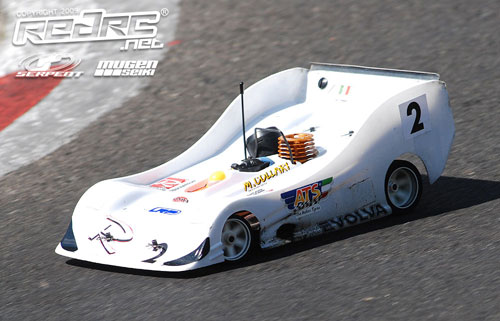Does your friend want to drive some real races against others over a long distance?
If yes, than I think there can be a advantage from using aerodynamics.
I have been thinking about this a few years ago.
At this time I was building RC model planes.
But I was more interested in race cars and and wanted to build a race car
with the experiences I got from building planes.
I planned a copy of the MP4 20 in scale 1:4,5 with underbody and working wings.
There should be a old thread about it here.
You can search it if you want.
Actually I am still building the car, but I got stuck in building the suspensions right now.
For the downforce thing.
On this car, weight ca 8kg and over one meter length, the downforce should start to play a little role at ca 80km/h.
The problem is that you need a track where you drive a corner at this speed to have a advantage against the others.
And I doubt there is such a competition track for those cars.
If you only drive in a straight line downforce brings you nothing.
It's not important how high your max speed is, it's important how high your corner speed is.
For the drag thing.
Your car has a max speed. You must know why your car can't reach a higher speed.
- because your engine reaches max revs. But the car could go faster with other transmission
-because you get more drag than your engine brings force
If the second is the case, than you can possible do a lot to reduce drag.
now you are driving at ca 100km/h. Little changes to reduced drag can bring here a noticeable effect .
For the cooling
The better the engine is cooled, the more power it will produce.
Keeping your engine cold, and it can bring extra power and has increased durability.
- Login or Register
No account yet? Sign up

